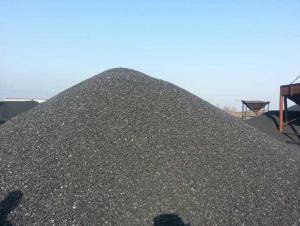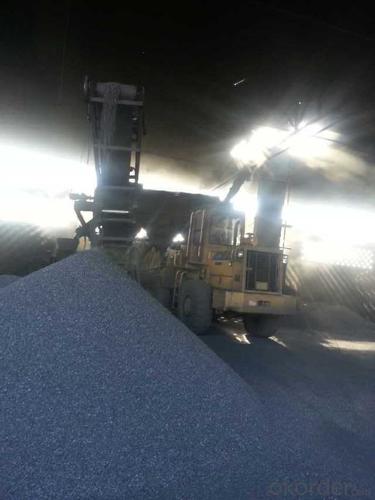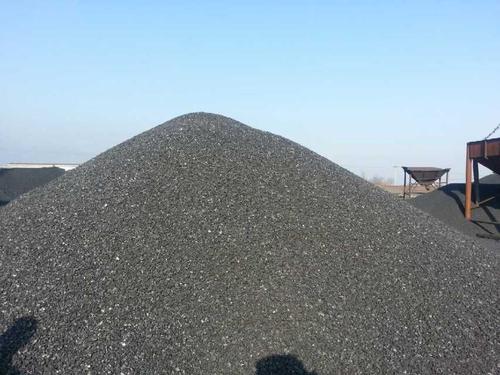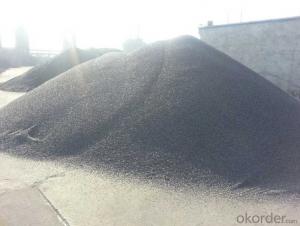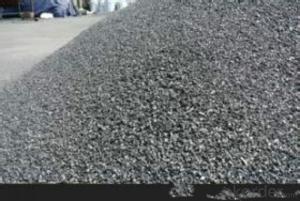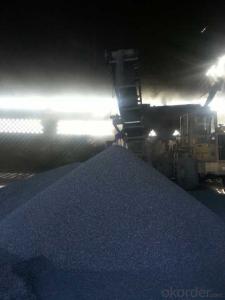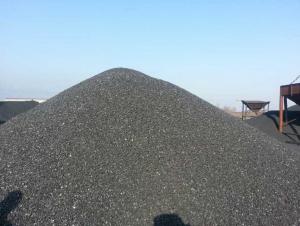Steel Plant and Manufacturer Injection Carbon FC95 for
- Loading Port:
- Tianjin
- Payment Terms:
- TT OR LC
- Min Order Qty:
- 20 m.t.
- Supply Capability:
- 5000 m.t./month
OKorder Service Pledge
OKorder Financial Service
You Might Also Like
Injection Carbon FC95 with good and stable quality
Packaging & Delivery
25kgs/50kgs/1ton per bag or as buyer's request
Specifications
Injection Carbon FC95 with good and stable quality
Calcined Anthracite
Fixed carbon: 90%-95%
S: 0.5% max
Size: 0-3. 3-5.3-15 or as request
Injection Carbon FC95 with good and stable quality
Advantage and competitive of caclined anthracite:
1. strong supply capability
2. fast transportation
3. lower and reasonable price for your reference
4.low sulphur, low ash
5.fixed carbon:95% -90%
6..sulphur:lower than 0.3%
Injection Carbon FC95 with good and stable quality
General Specification of Calcined Anthracite:
| FC | 95 | 94 | 93 | 92 | 90 |
| ASH | 4 | 5 | 6 | 6.5 | 8.5 |
| V.M. | 1 | 1 | 1 | 1.5 | 1.5 |
| S | 0.3 | 0.3 | 0.3 | 0.35 | 0.35 |
| MOISTURE | 0.5 | 0.5 | 0.5 | 0.5 | 0.5 |
Pictures
Injection Carbon FC95 with good and stable quality

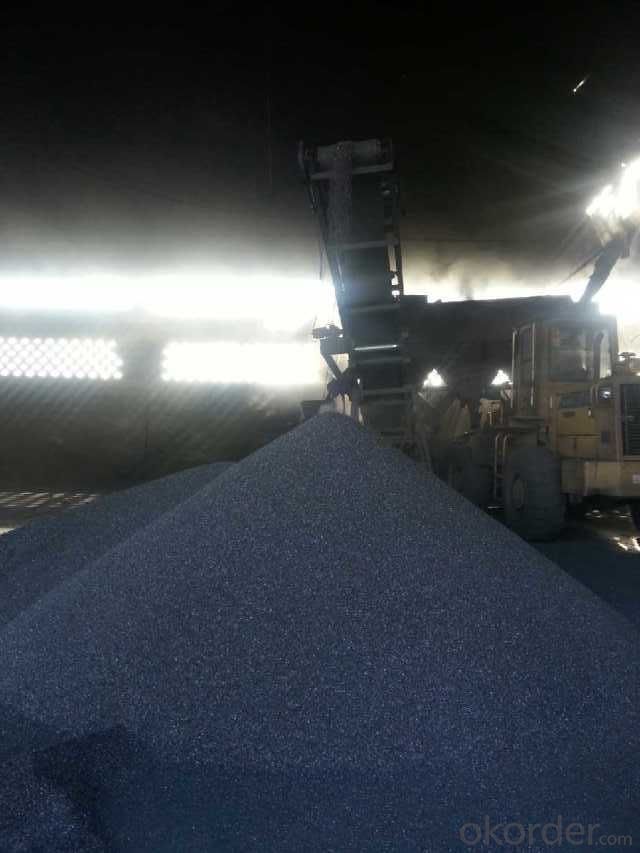
FAQ:
Injection Carbon FC95 with good and stable quality
Why we adopt carbon additive?
Carbon Additives used as additive in steel making process. It made from well-selected Tai Xi anthracite which is low in content of ash, sulphur, phosphorus, high heat productivity, high chemically activation.
Mainly industry property of it is: instead of traditional pertroleum coal of Carbon Additives, reduce the cost of steelmaking.
- Q: How is carbon used in the production of pharmaceuticals?
- Carbon is used in various ways in the production of pharmaceuticals. One primary use of carbon is in the synthesis of organic compounds, which form the basis of many drugs. Carbon atoms are the building blocks of organic compounds, and they are essential for creating the complex structures found in pharmaceutical molecules. Carbon is also used in the production of active pharmaceutical ingredients (APIs). APIs are the components of a drug that provide the desired therapeutic effect. Carbon is often incorporated into the structure of APIs to enhance their stability, bioavailability, and efficacy. Carbon-based molecules can be modified to fine-tune their properties, making them more effective in targeting specific diseases or conditions. Moreover, carbon is utilized in the purification and separation processes during pharmaceutical production. Carbon-based adsorbents, such as activated carbon, are commonly used to remove impurities and contaminants from drug formulations. These adsorbents have a high surface area and can effectively bind to and remove unwanted substances, ensuring the purity and safety of pharmaceutical products. Carbon is also employed in the development of drug delivery systems. Carbon nanomaterials, such as carbon nanotubes and graphene, have unique properties that make them suitable for drug delivery applications. These nanomaterials can encapsulate drugs, allowing for controlled release and targeted delivery to specific tissues or cells. They can also improve the solubility and stability of drugs, enhancing their therapeutic potential. In summary, carbon plays a crucial role in the production of pharmaceuticals. It is involved in the synthesis of organic compounds, the creation of active pharmaceutical ingredients, the purification of drugs, and the development of drug delivery systems. Its versatility and ability to form complex structures make carbon an essential element in the pharmaceutical industry.
- Q: What are the consequences of increased carbon emissions on educational systems?
- Increased carbon emissions have profound consequences on educational systems. One of the major consequences is the negative impact on the health and well-being of students and teachers. Carbon emissions contribute to air pollution, which can lead to respiratory problems, allergies, and other health issues. This, in turn, affects attendance rates and overall student performance. Furthermore, the effects of climate change caused by carbon emissions, such as extreme weather events and rising temperatures, can disrupt educational infrastructure. Schools may be closed or damaged due to hurricanes, floods, or heatwaves, leading to a loss of instructional time and disruption to the learning environment. In addition, increased carbon emissions contribute to the depletion of natural resources, such as water and food, which can have severe consequences for educational systems. In regions heavily reliant on agriculture, climate change can disrupt food production and availability, leading to malnutrition and reduced cognitive development in children. Lack of access to clean water can also impact sanitation in schools, increasing the risk of diseases and impacting students' ability to concentrate and learn. Moreover, the consequences of increased carbon emissions extend beyond physical health and infrastructure. Climate change is a complex global issue that requires an understanding of scientific concepts and critical thinking skills to address. However, inadequate education on climate change and its causes can hinder students' ability to comprehend and respond to this pressing issue. Furthermore, the economic impacts of climate change resulting from increased carbon emissions can strain educational systems. Governments may have to divert resources away from education to address climate-related disasters and their aftermath. Limited funding for education can lead to reduced access to quality education, inadequate facilities, and lower teacher salaries, all of which can negatively impact the overall quality of education provided. In conclusion, increased carbon emissions have wide-ranging consequences on educational systems. From the health and well-being of students and teachers to disruptions in infrastructure and access to resources, the effects of carbon emissions can hinder educational outcomes. Addressing climate change and reducing carbon emissions is crucial not just for the environment but also for the future of education.
- Q: How do plants use carbon dioxide?
- Plants use carbon dioxide through a process called photosynthesis, which is vital for their survival. During photosynthesis, plants take in carbon dioxide from the air through small openings on their leaves called stomata. Inside the leaves, carbon dioxide combines with water, which is absorbed by the roots, to produce glucose and oxygen. The glucose is used by the plant as a source of energy to carry out various metabolic processes and to grow. Additionally, plants store excess glucose in the form of starch for future use. The oxygen produced during photosynthesis is released back into the atmosphere, which is crucial for the survival of other living organisms, including humans, as we depend on oxygen for respiration. Therefore, plants play a crucial role in maintaining the balance of carbon dioxide and oxygen in the atmosphere, making them essential for life on Earth.
- Q: What is carbon?
- Carbon is a chemical element that is essential for life on Earth. It is found in all living organisms and is the building block for the organic compounds that make up our bodies, such as proteins, carbohydrates, lipids, and nucleic acids. Carbon is also a key component of the Earth's atmosphere, where it exists mainly as carbon dioxide. It is present in various forms, including graphite and diamonds, and has the ability to form strong bonds with other elements, making it incredibly versatile. Carbon plays a crucial role in many natural processes, such as photosynthesis, respiration, and the carbon cycle, which helps regulate the Earth's climate. It is also widely used in industry, serving as a raw material for the production of fuels, plastics, and countless other products. Overall, carbon is a fundamental element that is vital for sustaining life and driving various chemical and biological processes.
- Q: What are the impacts of carbon emissions on biodiversity?
- Biodiversity is significantly affected by carbon emissions, which have various consequences. One of the primary outcomes is climate change, which results from the release of greenhouse gases, including carbon dioxide, into the atmosphere. As the Earth's temperature increases, it disrupts the delicate balance of ecosystems, causing the loss of biodiversity. Habitat loss is a major effect of climate change on biodiversity. Many species are adapted to specific environmental conditions, and as these conditions change, their habitats become unsuitable. This can lead to the extinction of species that cannot adapt or migrate to new areas. For instance, coral reefs are highly sensitive to temperature changes, and with the ocean warming due to carbon emissions, numerous coral species are at risk of bleaching and dying off. Carbon emissions also disrupt ecological interactions, which are crucial for the survival of many species. Numerous species rely on specific relationships with other species, such as pollination or predation. Climate change can alter the timing of these interactions, potentially causing mismatches between species. For example, if flowering plants bloom earlier in the year due to warmer temperatures, but their pollinators are not yet active, it can result in reduced pollination and reproductive success. Furthermore, carbon emissions contribute to ocean acidification, which occurs when seawater absorbs carbon dioxide, leading to a decrease in pH. This acidification negatively affects marine organisms, especially those with calcium carbonate shells or skeletons, like corals, mollusks, and some plankton. The increased acidity makes it challenging for these organisms to build and maintain their protective structures, potentially causing population declines and disruptions in ecosystems. In general, the impacts of carbon emissions on biodiversity are extensive and profound. They not only threaten individual species but also disturb entire ecosystems and their functioning. To mitigate these effects, it is essential to reduce carbon emissions and transition to cleaner and more sustainable energy sources. Additionally, conserving and restoring habitats, implementing effective conservation strategies, and promoting sustainable land and water management practices can help protect and restore biodiversity in the face of climate change.
- Q: How is carbon used in the production of graphite?
- Carbon is used in the production of graphite by undergoing a process known as graphitization, where carbon atoms are arranged in a hexagonal lattice structure. This process involves heating carbon at high temperatures, causing the carbon atoms to align and form layers, resulting in the formation of graphite.
- Q: What are the impacts of carbon emissions on the stability of permafrost?
- Carbon emissions have significant impacts on the stability of permafrost. As carbon dioxide and other greenhouse gases accumulate in the atmosphere, they trap heat, leading to global warming. This rise in temperatures causes permafrost, which consists of permanently frozen soil and rock, to thaw. The thawing of permafrost releases large amounts of carbon dioxide and methane, intensifying the greenhouse effect and further contributing to climate change. Additionally, as permafrost thaws, it destabilizes the ground, resulting in land subsidence, infrastructure damage, and increased erosion. These impacts can have cascading effects on ecosystems, indigenous communities, and the overall stability of the environment.
- Q: How do humans contribute to carbon emissions?
- Humans contribute to carbon emissions in several ways. One major source of carbon emissions is the burning of fossil fuels for electricity, transportation, and heating. This includes burning coal, oil, and natural gas, which releases carbon dioxide (CO2) into the atmosphere. The use of these fossil fuels is prevalent in our daily lives, from powering our homes and vehicles to manufacturing goods and producing food. Additionally, deforestation, primarily driven by human activities such as agriculture, logging, and urbanization, also contributes to carbon emissions. Trees absorb CO2 and release oxygen, so when they are cut down, the stored carbon is released back into the atmosphere. Moreover, industrial processes, such as cement production and the manufacturing of chemicals, also release substantial amounts of CO2. Lastly, the livestock industry, particularly the production of beef and dairy products, contributes to carbon emissions through methane emissions from livestock and the deforestation associated with expanding grazing areas and growing animal feed. Overall, human activities directly and indirectly contribute to carbon emissions, highlighting the need for collective efforts to mitigate and reduce our impact on the environment.
- Q: What are the effects of carbon emissions on the stability of desertification?
- Carbon emissions have a significant impact on the stability of desertification. The release of carbon dioxide and other greenhouse gases into the atmosphere through human activities, such as burning fossil fuels and deforestation, contribute to global warming. This increase in temperature leads to several adverse effects on desertification. One of the key consequences of carbon emissions is the alteration of precipitation patterns. As the planet warms, the evaporation rate increases, causing more water to be held in the atmosphere. This results in reduced rainfall in many regions, including arid and semi-arid areas already prone to desertification. The decrease in water availability exacerbates the dry conditions, making it easier for desertification to occur and intensify. Moreover, higher temperatures caused by carbon emissions contribute to the acceleration of soil erosion. As the land heats up, it becomes more prone to erosion through wind and water. This leads to the loss of topsoil, which is crucial for plant growth and stability. Without a stable layer of topsoil, vegetation struggles to establish and survive, ultimately contributing to the expansion of deserts. Furthermore, carbon emissions also impact the health and productivity of plant communities. Increased levels of carbon dioxide in the atmosphere can stimulate plant growth in some cases, but this often leads to the proliferation of invasive species that are better adapted to the changing conditions. These invasive species outcompete native plants, reducing biodiversity and further destabilizing the ecosystem. Additionally, as desertification progresses, the loss of plant cover results in reduced carbon sequestration capacity, leading to even higher carbon dioxide levels in the atmosphere. In conclusion, carbon emissions have detrimental effects on the stability of desertification. They disrupt precipitation patterns, accelerate soil erosion, reduce plant productivity, and diminish the capacity to sequester carbon. It is crucial to reduce carbon emissions through sustainable practices and conservation efforts to mitigate the impacts on desertification and prevent its further progression.
- Q: How does carbon impact the quality of freshwater systems?
- Carbon can have a significant impact on the quality of freshwater systems. One of the main ways carbon affects these systems is through the process of carbon dioxide (CO2) emissions. When excess CO2 is released into the atmosphere, it can dissolve in rainwater and form carbonic acid. This acidification of freshwater bodies can lower the pH levels, making the water more acidic. High levels of acidity can be detrimental to many freshwater organisms, including fish, amphibians, and invertebrates. It can disrupt their reproductive systems, impair their growth and development, and even lead to the death of these organisms. Additionally, increased acidity can also affect the availability of essential nutrients in the water, further impacting the health and survival of aquatic life. Another way carbon impacts freshwater systems is through the process of eutrophication. Excess carbon can enter freshwater bodies through runoff from agricultural fields or wastewater treatment plants. This excess carbon acts as a nutrient, fueling the growth of algae and other aquatic plants. As these plants proliferate, they can create dense mats on the water's surface, blocking sunlight and depleting oxygen levels. The depletion of oxygen can lead to hypoxia, a condition where oxygen levels become dangerously low, resulting in the death of fish and other organisms. Additionally, the excess growth of algae can lead to algal blooms, which can release toxins into the water, further impacting the quality of freshwater systems. Furthermore, carbon can also impact the temperature of freshwater systems. Increased levels of carbon dioxide in the atmosphere contribute to global warming, which raises the overall temperature of the planet. As a result, freshwater systems may experience higher water temperatures, leading to changes in the ecosystem. Some species may struggle to adapt to these warmer conditions, while others, such as invasive species, may thrive. In conclusion, carbon has a significant impact on the quality of freshwater systems. It can lead to acidification, eutrophication, and changes in temperature, all of which have detrimental effects on the health and survival of aquatic organisms. Addressing carbon emissions and reducing our carbon footprint is crucial in protecting the integrity of freshwater systems and ensuring their long-term sustainability.
Send your message to us
Steel Plant and Manufacturer Injection Carbon FC95 for
- Loading Port:
- Tianjin
- Payment Terms:
- TT OR LC
- Min Order Qty:
- 20 m.t.
- Supply Capability:
- 5000 m.t./month
OKorder Service Pledge
OKorder Financial Service
Similar products
Hot products
Hot Searches

